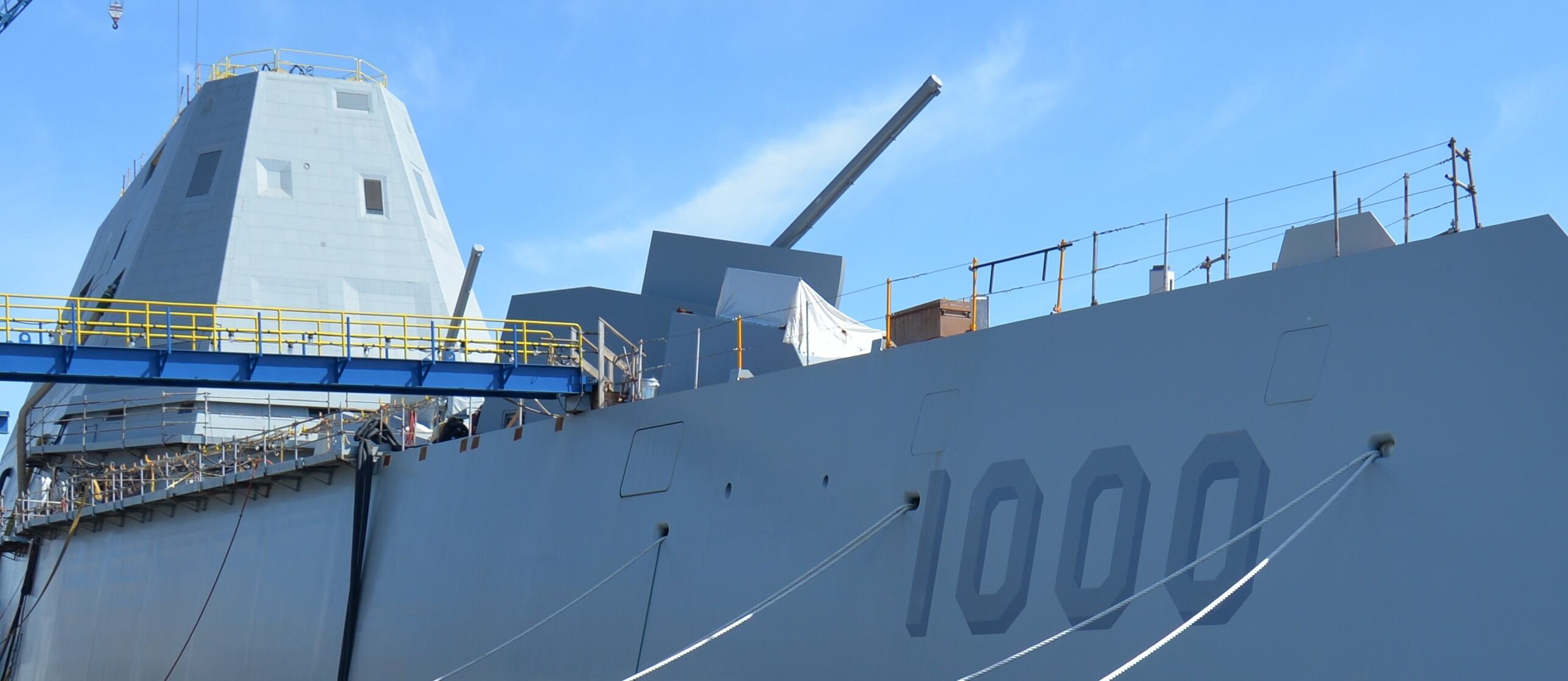Development issues with the Navy’s Advanced Gun System, destined to be one of the main armaments of DDG-1000, prompted the Navy to change Zumwalt into a ship killer, the Navy’s top requirements officers said Tuesday.
The Navy announced in February in budget justification documents that it intended to integrate Raytheon’s SM-6 missile and was changing the mission from a land-attack platform to a ship killer.
In testimony before the Senate Armed Services Committee’s seapower subcommittee, Vice Adm. Bill Merz told senators that the slow development of the AGS prompted the change.
The AGS, in conjunction with the Long-Range Land Attack Projectile, was supposed to fire a round more than 80 nautical miles. The Navy canceled the projectile after truncating the total Zumwalt-class buy to three ships pushed the cost per round up to more than $800,000 per round. Furthermore, the system was also failing to achieve the range it wanted out of the system, Merz said.
“Even at the high cost, we still weren’t really getting what we had asked for,” he said. “So what we’ve elected to do is to separate the gun effort from the ship effort because we really got to the point where now we’re holding up the ship.”
RELATED

Merz said the ship was ready to start its life with the fleet and that the larger MK 57 vertical-launch system canisters will allow for more advanced weapons to be developed and fired from the ship.
“It does have 80 vertical launch cells. Those are the larger variety cell, so that opens up opportunities for advanced development on our weapons side also. Our combat system is very good as are inherent ship capabilities.
“We think the ship is very well-built, ready to join the fleet. We’re very excited to get her and we’ll continue to develop the rounds for the gun in parallel.”
Mission Change & Gun System Blues
The Navy has moved ahead with a plan to add SM-6 on to Zumwalt, which allows the Navy to engage surface targets and extremely long ranges among other missions.
In August, the Navy shot down a medium-range ballistic missile target with the SM-6, which uses a fragmenting explosion near its target as the kill mechanism.
This is different from the SM-3 Block IIA in development that hits its target directly. SM-6 can also be used to hit surface targets at sea and on land from hundreds of miles away.
Beefing up the ship-killing armament even further will be the new and improved maritime version of the Tomahawk, which could be loaded into the MK-57 VLS.
For the Maritime Tomahawk, Raytheon is integrating a new seeker into its tried-and-true strike missile for long-range ship-on-ship engagements. The land-attack version has a range of more than 1,350 nautical miles.
But the sticking point for the Navy in the development of the Zumwalt-class has been the gun.
In January, Zumwalt’s former commanding officer, Capt. James Kirk, said the Navy was in a holding pattern on the guns. While the service is keeping an eye on a couple key technologies that could fill in the gap left by LRLAP, “there is not a plan right now for a specific materiel solution for the replacement round,” Kirk told reporters at the Surface Navy Association symposium.
“We continue to monitor industry’s development and technical maturation. An example of that is the Hyper Velocity Projectile,” he said, referring to a high speed guided munition made by BAE Systems and originally developed for use in electromagnetic rail guns.
“We’re monitoring that technical maturation to see do we get there to get the kind of ranges and capabilities we want, that’s the right bang for the buck, cost to capability, for the Navy. We’re monitoring that, but we have not made a decision for that yet.”
The Navy got in its present pickle with the 155mm/62-caliber gun with automated magazine and handling system because the service cut the buy from 28 ships, to seven, and finally to three.
The AGS, the largest U.S. naval gun system since World War II, was developed specifically for the Zumwalt class, as was the LRLAP round it was intended to shoot. There was no backup plan so when the buy went from 28 to thee, the costs stayed static, driving the price of the rounds through the roof.
“We were going to buy thousands of these rounds,” said a Navy official familiar with the program told Defense News at the time. “But quantities of ships killed the affordable round.”
David B. Larter was the naval warfare reporter for Defense News.








